Ducati DU4 – Ducati Apollo
Ducati’s early four-cylinder forays with Phil Aynsley
With the announcement of Ducati’s first mass production four cylinder motorcycle engine (discounting the limited production Desmosedici RR), the Desmosedici Stradale, it brought to mind the somewhat overlooked history of the company’s long interest in four cylinder power plants – which stretches back far further than most realise!
A Four Wheeled Ducati?
After the war the Ducati brothers were looking to rebuild their factory complex (which had been destroyed by allied bombing) and provide employment for thousands of their workers so, with the assistance of the government, in 1946 they started to manufacture the Cucciolo clip-on motor that SIATA had put into small-scale production the previous year.
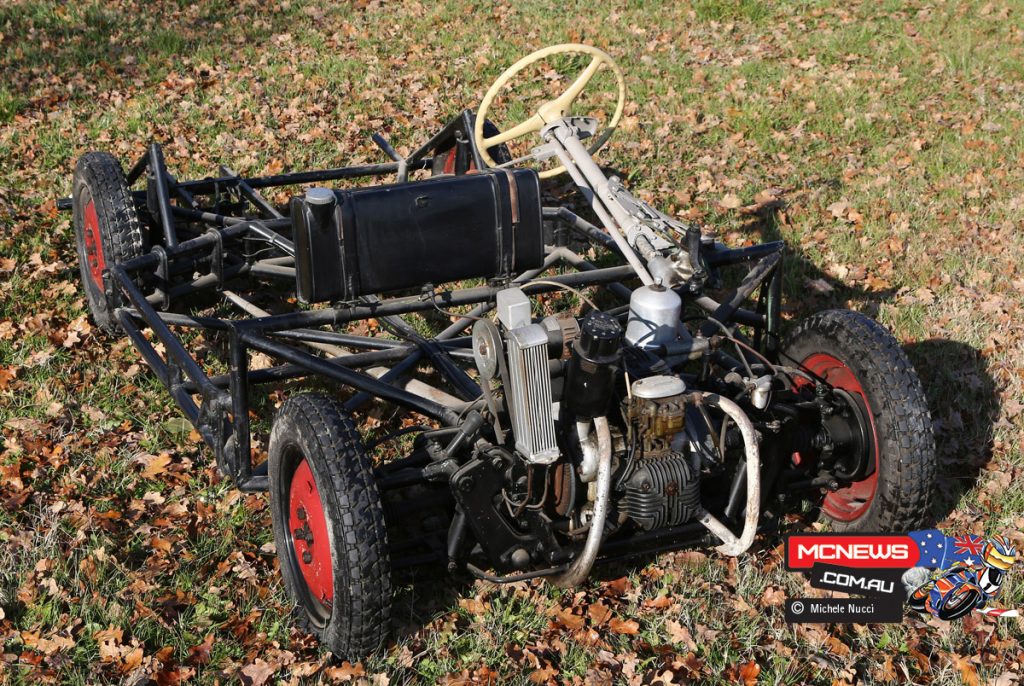
The brothers were also interested in four wheeled transport solutions to Italy’s chronic post war transportation problems – hence the development of the two-seater DU4 sedan. Only the chassis/motor still survives (after being held by FIAT from 1948 to 2005) with the motor providing the most interest – a 250cc V4 (in ‘L’ configuration!) 4-stroke. A 350cc “Sports” model was also planned. The car was quite advanced for its era, featuring front wheel drive, all independent suspension and hydraulic brakes.
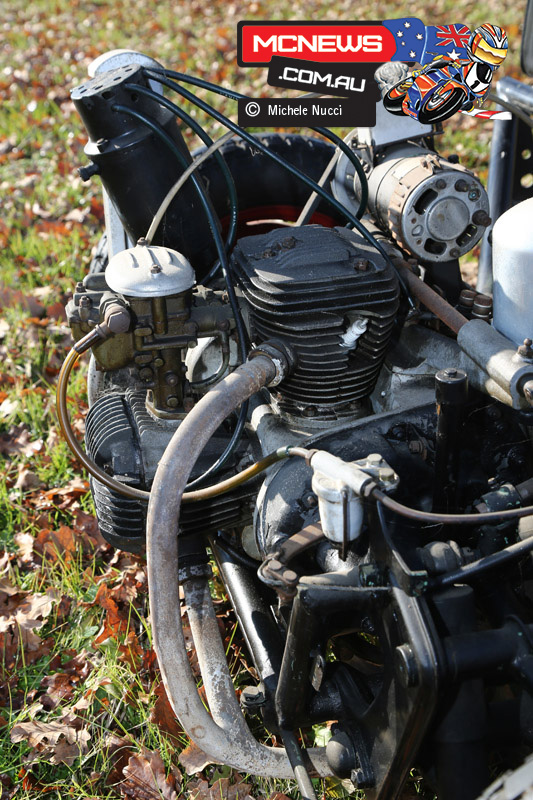
Alas for Ducati’s four wheeled hopes the Cucciolo proved to be such a success (over 400,000 produced), that all the company’s efforts went into expanding production of it and the subsequent long line of motorcycles that followed.
The Fabled Ducati Apollo!
The next stop on Ducati’s four cylinder path started in 1959 when the US importer Berliner Motor Corporation (who were taking about 85% of the company’s output by the early ‘60s and thus had an enormous amount of influence) suggested Ducati could design a large capacity motorcycle for the police market, then dominated by Harley Davidson.
Berliner’s were also the US Zündapp importer and had already interested several police forces in their KS601 flat twin. However Zündapp ceased production of that model in 1958 leaving the Berliner brothers with interested potential customers but no product.
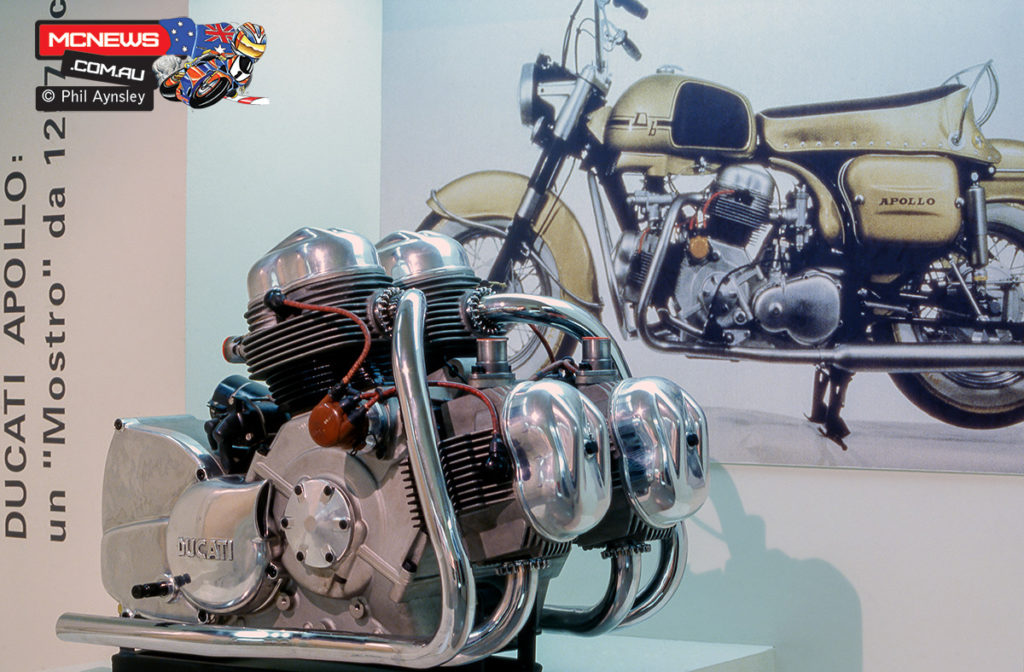
US police specifications mandated a capacity of at least 1200cc, a minimum wheelbase of 60 inches (1525mm) and critically, the use of 5.00 x 16” tyres. Ing Fabio Taglioni took on the task despite that the largest capacity bike Ducati was making at the time was the 200cc Elite single – a far cry from what would be required! Negotiations between the Beliners, the factory and the government bureaucrats in Rome who controlled the purse strings lasted until an agreement was reached in 1961.
This provided for the Berliners to underwrite the cost of development plus contribute to the production tooling costs. In return they were able to write the specifications (the only addition to the police specifications was that the motor had to have a larger capacity than the current Harley’s 74 cu in/1215cc). They also chose the ‘Apollo’ name as a tribute to the American manned space program.
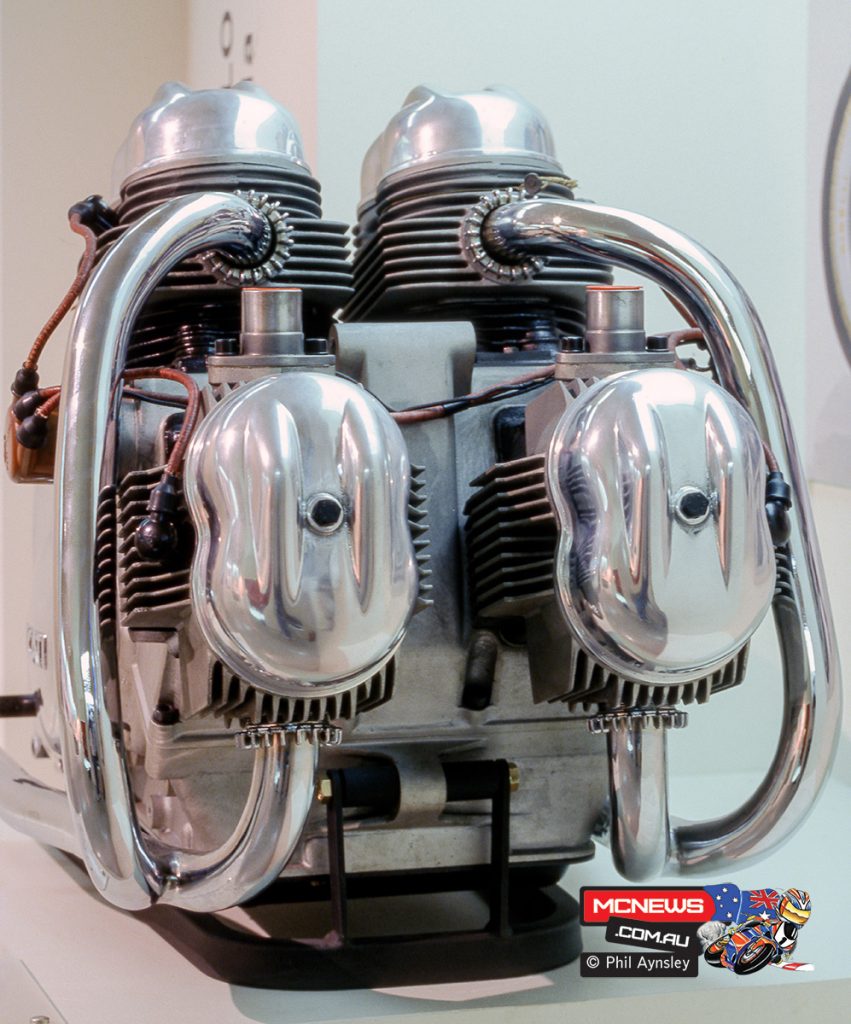
Harking back to his engineering degree thesis from 1948 (a 90º 250cc V4), Taglioni designed a 1257cc V4 in what would become the very familiar ‘L’ configuration. The OHV motor used a single gear-driven camshaft running between the cylinders – a very safe choice as this was basically the same system used by countless V8 car engines, as well as Harleys, and thus very familiar to American mechanics.
The single crankshaft used 180º timing (each pair of pistons rising and falling together). The valve rockers used screw adjustment. The motor used a very short 84.5 x 56mm bore/stroke. A 5-speed gearbox was fitted, with a duplex chain final drive (as Benelli later used for the 900 Sei). Space was left in the gearbox housing however for a Sachs variable-speed auto (which Moto Guzzi was to introduce in their 1975 V1000 Convert). Both kick and electric starters were fitted and a 200W generator provided for the extra police equipment.
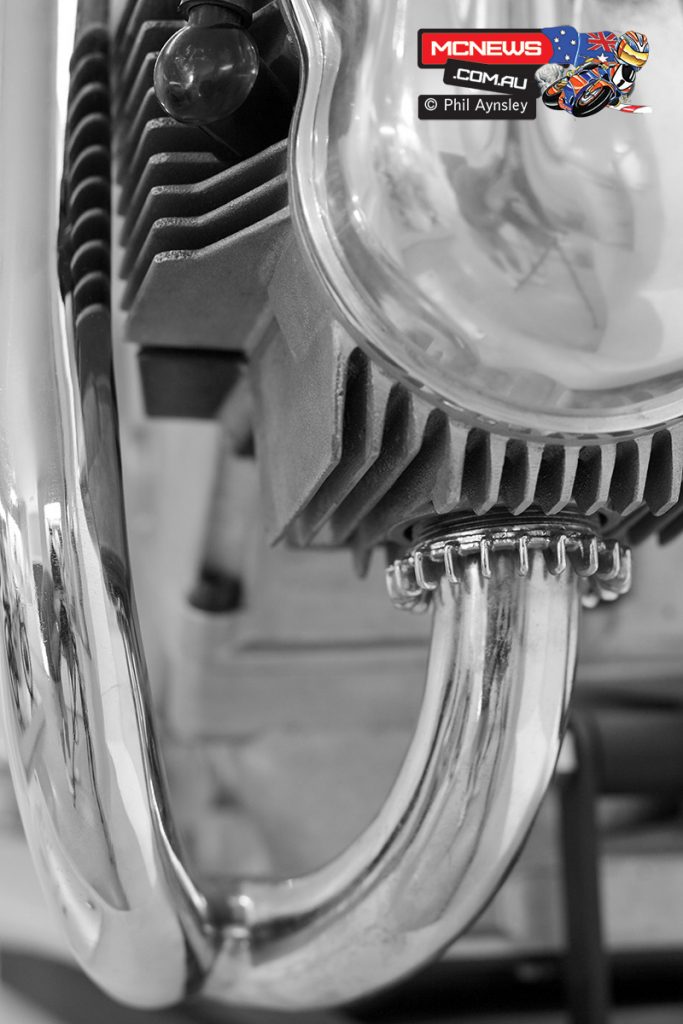
It was always envisioned that a series of touring models would also be produced to offset the high cost of development and production. A sportier four 32mm carburettor 100hp (at 7,000rpm) version and a standard twin 24mm carb 80hp (at 6,000rpm) base model were envisioned.
The first of two prototypes was delivered to the Beliners in March 1964 and was a rather ungainly looking machine with styling that recalled the 175 Americano single from a few year earlier – only worse and painted gold! Despite its looks the bike had a dry weight of 271kg and measured only 450mm across the engine cases. The wheelbase was 1555mm. The comparable Harley weighed 20kg more, had a 25mm longer wheelbase and an output of only 55hp.
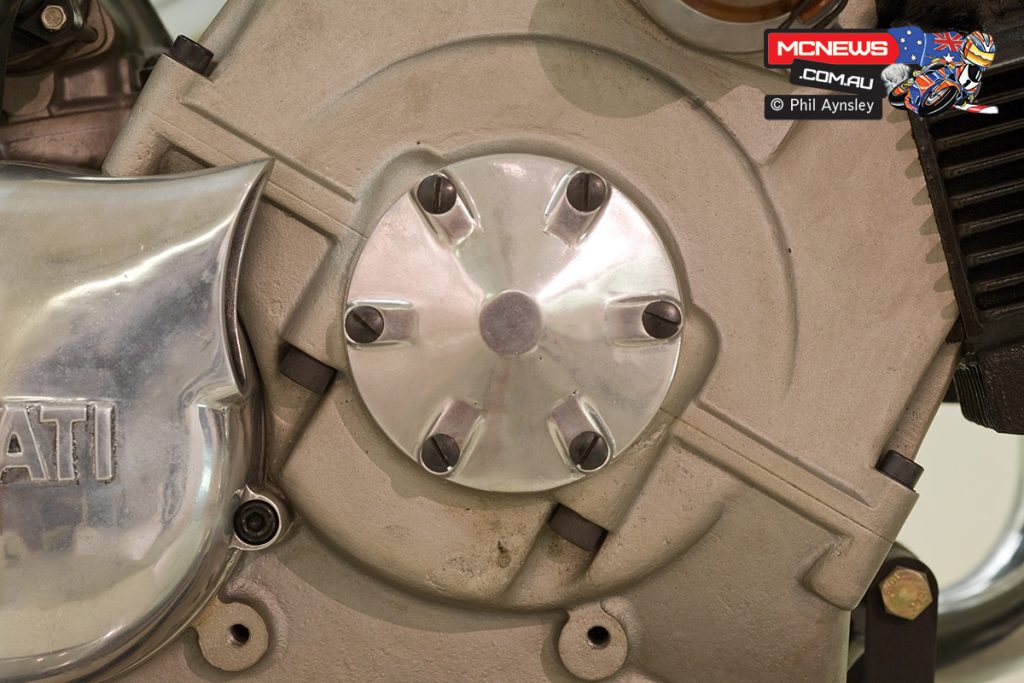
The second prototype was shown a year later at Daytona and was fitted with a more modern tank, revised side covers, smaller mudguards and a black and silver paint scheme. The large seat/grab rail was carried over however!
Prior to the first prototype being handed over, testing in Italy had revealed the bike’s Achilles Heel – the special Pirelli 16 inch tyres. Despite being of the most advanced construction available at the time the combination of the bike’s weight, 100hp and a top speed of 200kph was too much for the rear tyre, causing it to balloon and throw the tread at speed when on the autostrada! Further testing in the U.S. confirmed the problem.
The motor was detuned to the 80hp specification but to no avail. A further reduction to 65hp resolved the situation but while that still gave a useful advantage over a Harley for police use it meant that the premium price the Berliners had been planning for the ‘civilian’ versions ($1,500 and $1,800) couldn’t be justified over the BMW and British twins that now had superior power to weight figures.
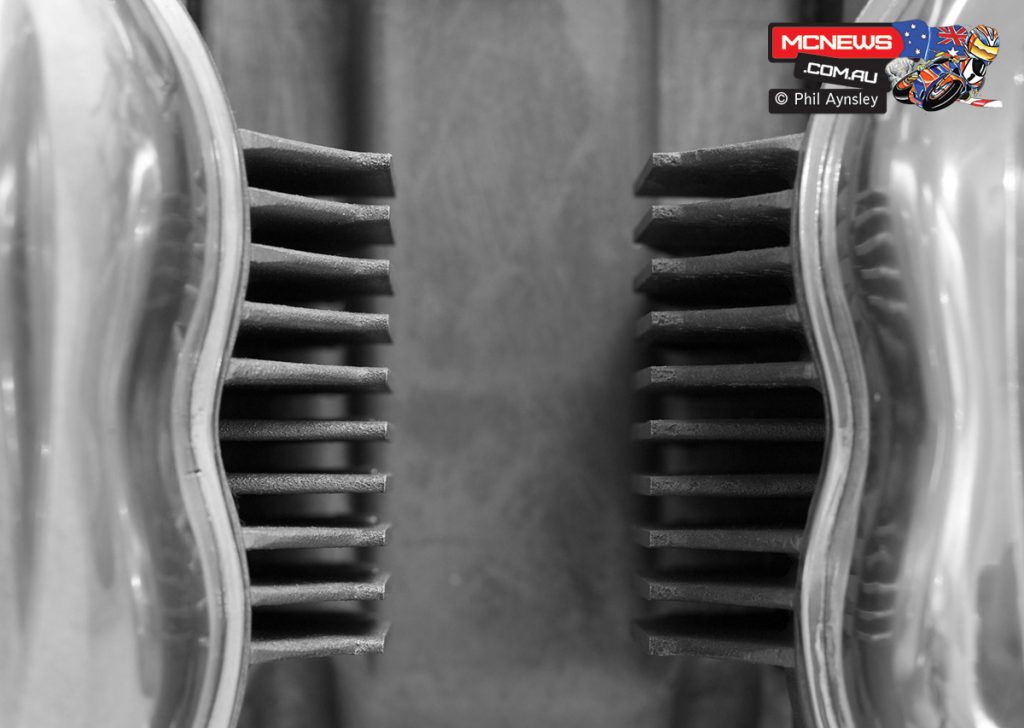
With only police sales not being enough to defray the massive production costs the Rome based bureaucrats took the opportunity to withdraw the funds they’d never been happy to allocate in the first place, resulting in the factory cancelling the project in 1965.
The second prototype and a spare motor are the only Apollo items known to have survived. The bike was stored in the Berliners’ warehouse for 20 years before being sold to the Domiracer company. It was then sold to a Japanese collector. The spare motor resided in Taglioni’s office for many years before finding a home in the Ducati Museum.























